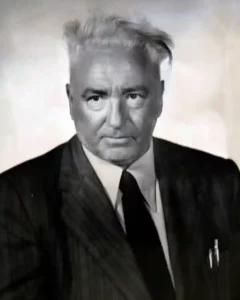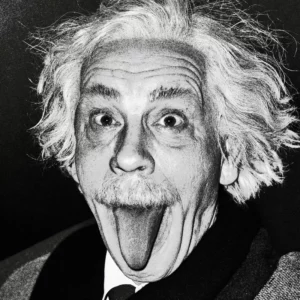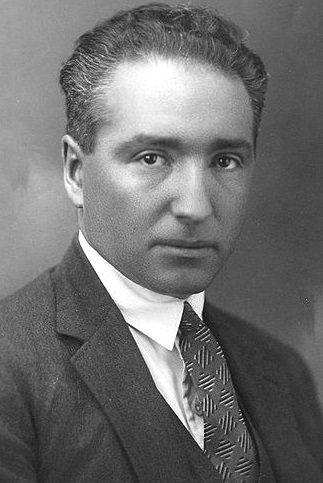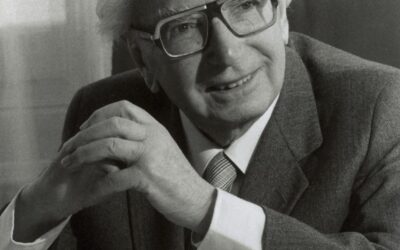Who was Wilhelm Reich?
Wilhelm Reich, a controversial figure cloaked in enigmatic complexity and untamed paradoxes, defied easy categorization throughout his extraordinary life. Born on March 24, 1897, in the mystical realm of Galicia, Reich embarked on a career marked by intellectual brilliance, radical ideas, and a destiny entwined with both triumph and tragedy.
A child prodigy with a restless spirit, he immersed himself in the worlds of medicine and psychoanalysis, driven by an insatiable curiosity that defied the boundaries of conventional understanding. Embracing the mantle of Sigmund Freud’s prodigious protégé, Reich at first was one of the crown jewels of the psychoanalytic institute. Reich had some brilliant ideas that we will get into below but he also had an unchecked psychotic tendency and restrained messianic complex. Theses problems lead the main currents of the psychotherapy profession to ignore his better angels.
Reich’s early work focused on understanding the role of sexuality in human psychology. He explored the link between sexual repression and neurosis, arguing that liberating sexual energy could lead to improved mental health. These ideas challenged the prevailing attitudes of the time and marked the beginning of Reich’s lifelong commitment to sexual liberation and its relationship to overall well-being.
In the 1920s, Reich developed his own therapeutic approach known as character analysis. He believed that psychological issues were rooted in physical tensions and patterns of muscular rigidity. By observing a person’s body language and analyzing their character structure, Reich aimed to uncover the underlying emotional conflicts and help patients release pent-up emotions.
Why was Wilhelm Reich important?
Wilhelm Reich, a pioneering figure in the field of psychoanalysis, can be credited as one of the early advocates and practitioners of experiential and somatic therapies. While rooted in psychoanalytic principles, Reich’s work extended beyond traditional talk therapy, emphasizing the significance of direct experience and bodily sensations in the therapeutic process.
Reich’s therapeutic approach, often referred to as character analysis, placed a strong emphasis on exploring the connection between emotions, physical sensations, and the body. He believed that psychological conflicts and repressed emotions were intricately linked to bodily tensions and held in the muscular armor of the individual.
In contrast to the prevailing psychoanalytic approaches of the time, which focused primarily on verbal expression and introspection, Reich recognized the importance of experiential and somatic elements in therapeutic healing. He saw the body as a reservoir of information, where emotions and past experiences were held, and advocated for their direct exploration and release.
One of Reich’s significant contributions was his attention to bodily manifestations and the use of physical techniques to facilitate emotional expression and release. He employed techniques such as deep breathing exercises, body awareness, and movement to help clients become more attuned to their bodily sensations and encourage the free flow of emotions.
Reich’s emphasis on the importance of physical pleasure and the liberation of sexual energy also marked a departure from traditional psychoanalytic approaches. He believed that unfulfilled sexual needs and repressed sexuality could contribute to psychological disturbances, and thus sought to address these issues through experiential and somatic methods.
Furthermore, Reich’s development of the orgone energy concept and the orgone accumulator, while controversial, can be seen as an attempt to incorporate somatic elements into the therapeutic process. The orgone accumulator was designed to harness and concentrate what Reich called orgone energy, with the belief that it could promote physical and emotional well-being.
While Reich’s ideas and techniques were met with skepticism and controversy, his work laid the foundation for subsequent experiential and somatic therapies. His focus on bodily experiences, emotional expression, and the integration of mind and body paved the way for approaches such as Gestalt therapy, body-oriented psychotherapy, and other somatic modalities that emerged in later years.
Wilhelm Reich’s contribution to the development of experiential and somatic therapies challenged the prevailing views of his time and expanded the possibilities for understanding and addressing psychological difficulties. His exploration of the body-mind connection continues to influence contemporary therapeutic practices, underscoring the importance of embodied experiences in the process of healing and personal growth.
How did Wilhelm Reich’s “character analysis” work?
Wilhelm Reich’s character analysis was a therapeutic approach he developed to explore the connection between a person’s character structure, their emotions, and their overall psychological well-being. The technique aimed to uncover and understand the underlying emotional conflicts and defense mechanisms that shape an individual’s personality. Here are some key techniques employed in Reich’s character analysis:
Observation and Body Language: Reich believed that a person’s character structure is reflected in their body language, posture, and physical expressions. The therapist would carefully observe the client’s nonverbal cues, such as muscular tensions, facial expressions, and gestures, to gain insights into their emotional states and character traits.
Analysis of Armoring: Reich introduced the concept of “armoring,” which referred to the chronic muscular tensions and rigidity that people develop as a defense mechanism against repressed emotions. The therapist would examine the client’s body for signs of armoring, such as areas of chronic tension or resistance, and explore the emotional significance behind these physical manifestations.
Verbal Exploration: While body language played a significant role, verbal exploration was also crucial in character analysis. The therapist engaged the client in open-ended conversations to delve into their thoughts, memories, and emotional experiences. Through dialogue, the therapist would encourage the client to express their feelings and explore the connections between their emotions and their character structure.
Bioenergetic Techniques: Reich incorporated bioenergetic techniques to help clients release emotional and physical blockages. These techniques involved specific exercises, such as deep breathing, stretching, and movement, aimed at loosening muscular tensions, increasing body awareness, and facilitating the release of stored emotions. By working with the body, Reich believed it was possible to access and integrate repressed emotions.
Free Association: Similar to traditional psychoanalysis, Reich employed free association as a technique in character analysis. The therapist encouraged the client to freely express their thoughts, feelings, and associations without censorship. This allowed unconscious material to surface, providing insights into the client’s character structure and underlying emotional conflicts.
Working through Resistance: Reich recognized that clients may resist confronting and expressing certain emotions due to fear or discomfort. The therapist actively worked with resistance by gently challenging defenses and encouraging clients to explore the underlying reasons for their resistance. By gradually dismantling resistance, the therapy aimed to promote emotional growth and greater self-awareness.
It was weird that he made himself and clients strip down to their underwear for sessions though. Reich said the client needed to be naked for him to “analyze the body” and “poke at psychic armoring”. Ok. But.. why did Reich have to be naked too though.
All kidding aside Reich was not a creep and never made advances or did this with non consenting clients. He might have pioneered informed consent.
What were the odd and unhelpful parts of Reich’s therapy practices?
 Wilhelm Reich’s therapy approach, while influential and groundbreaking, was considered unconventional and even bizarre by many during his time. Some aspects that were deemed strange or unusual include:
Wilhelm Reich’s therapy approach, while influential and groundbreaking, was considered unconventional and even bizarre by many during his time. Some aspects that were deemed strange or unusual include:
Orgone Energy: Reich’s concept of orgone energy, a universal life force he believed flowed through all living organisms, was met with skepticism and seen as pseudoscientific by many in the scientific community. The notion of harnessing and manipulating this energy using devices like the orgone accumulator seemed unusual and unverifiable to mainstream scientists.
Orgasmic Release: Reich emphasized the importance of non-genital full-bodied orgasms as a means of releasing emotional and physical tensions. This focus on sexuality as a central aspect of therapy was considered unconventional and provocative, challenging the prevailing conservative attitudes of the time.
Emotional Expression: Reich placed significant emphasis on encouraging emotional expression and catharsis in therapy sessions. This could involve techniques such as shouting, crying, and physical movements to release pent-up emotions. These methods deviated from the more restrained and controlled approaches typically associated with psychotherapy.
Body Focus: Reich’s therapy techniques involved a strong focus on the body, including observing body language, muscular tensions, and physical manifestations of emotional states. This emphasis on the body as a gateway to psychological understanding was considered unconventional within the predominantly verbal and introspective tradition of psychoanalysis.
Political Involvement: In addition to his therapeutic work, Reich became increasingly involved in political activism, particularly in advocating for sexual liberation and societal change. This integration of political and social ideals within his therapy practice was seen as unusual and blurred the boundaries between personal and political realms.
Controversies and Legal Battles: Reich’s unorthodox methods and radical ideas led to conflicts and legal battles. He faced accusations of fraud and was ultimately arrested and imprisoned due to his refusal to comply with a court order regarding his orgone energy devices. These controversies added to the perception that his therapy was outside the mainstream and generated both intrigue and skepticism.
Succinctly: Reich was brilliant but he got weird on the reg.
Reich thought orgasms powered psychology. Uh, What?
Reich argued that repressed or unfulfilled sexual energy could lead to the development of psychological disturbances and physical tensions in the body. He believed that sexual repression resulted in the buildup of energy that could become stagnant and trapped within the individual, manifesting as psychological and physical symptoms. In contrast, the experience of a fully satisfying orgasm was seen as a release of this pent-up energy, leading to emotional catharsis and a sense of well-being.
Reich contended that individuals who experienced regular and fulfilling orgasms were more likely to have a balanced psychological state, increased vitality, and a greater capacity for emotional expression. He saw orgasms as not just pleasurable experiences but as powerful catalysts for personal growth and self-discovery. Through the release of sexual energy, Reich believed that individuals could access deeper layers of themselves, resolve emotional conflicts, and achieve a more authentic sense of being.
It’s important to note that Reich’s views on the significance of orgasms in psychology were met with skepticism and criticism, both during his time and in subsequent years. His emphasis on the therapeutic potential of orgasms and the role of sexual energy in psychological well-being diverged from mainstream psychoanalytic and scientific perspectives. Despite the controversy, Reich’s theories continue to influence alternative therapeutic approaches that incorporate the understanding of the mind-body connection and the exploration of sexual energy in the therapeutic process.
To be fair no one has conclusively proven that orgasms don’t power psychology yet though.
When did Reich go off the rails?
Reich was at first a valued member of the psychoanalytic institute. As time went on he became obstinate, and contentious with the other members about what he percieved as their avoidance of sexuality. That’s right, he wanted more sex in psychoanalysis than Freud did. As the disagreements grew, Reich’s unconventional behavior and confrontational style further alienated him from the psychoanalytic community.
In 1930. Reich, feeling marginalized and frustrated by the resistance to his ideas, wore a knife and carried a large club openly as a symbol of defiance and rebellion against what he perceived as the rigid and oppressive nature of the psychoanalytic establishment. This act was seen as provocative and threatening by his colleagues. The wearing of the knife, while symbolic in nature, was a highly visible manifestation of Reich’s growing paranoia and disillusionment and his belief that he was being unjustly suppressed. It marked a breaking point in his relationship with the psychoanalytic school, leading to his eventual expulsion.
In 1934, Reich was formally expelled from the International Psychoanalytic Association (IPA) due to his deviation from accepted psychoanalytic principles and his increasing radicalism. The incident with the knife became a symbolic representation of his rebellious nature and marked the final rupture between Reich and the psychoanalytic community.
What was wrong with him?
Wilhelm Reich’s psychological profile and diagnosis remain a subject of debate and speculation. It is likely that he had something like schizoid personality disorder which was not something that was diagnosed at the time. He was a brilliant and kind man. Also devoted father and healer. However he often had time reality testing his intuition or communicating his ideas. He also found it difficult to abandoned failed theories or compromise.
Did Reich “weird out” Albert Einstein?
 Einstein was used to hanging out with psychoanalysts. He drank a lot of red wine with Jung at Bollingen and helped him develop the theories that led to Jung’s synchronicity theory. Jung hung out with Wolfgang Pauli too. Please don’t email me and say I got the physicist that Jung hung out with and drank with at Bollingen wrong. Again, please stop doing that. He hung out with both of them. Stop. Unsubscribe.
Einstein was used to hanging out with psychoanalysts. He drank a lot of red wine with Jung at Bollingen and helped him develop the theories that led to Jung’s synchronicity theory. Jung hung out with Wolfgang Pauli too. Please don’t email me and say I got the physicist that Jung hung out with and drank with at Bollingen wrong. Again, please stop doing that. He hung out with both of them. Stop. Unsubscribe.
Anyway…
Reich contacted Einstein in December 1940, expressing his desire to discuss a scientific discovery. In January 1941, Reich visited Einstein at his home in Princeton, and they engaged in a lengthy conversation lasting nearly five hours. During this meeting, Reich explained his concept of a specific biologically effective energy, different from known electromagnetic energy, which he believed could be utilized against disease and as a weapon against fascism.
Einstein, recognizing the potential significance of the concept, agreed that if an object’s temperature could be raised without an apparent heating source, it would be like a “bomb.” As a result, Einstein conducted experiments with an orgone accumulator provided by Reich in his basement over the next 10 days. The experiments involved measuring temperatures above, inside, and near the device.
While Reich argued that the temperature increase observed was caused by orgone energy, one of Einstein’s assistants pointed out that the temperature was lower on the floor than on the ceiling, suggesting a temperature gradient within the room. Based on these findings, Einstein concluded that the effect was simply due to the temperature gradient, rather than orgone energy, and considered the matter resolved.
Reich responded to Einstein’s conclusions with a 25-page letter attempting to persuade him otherwise. He presented various experimental measures he had taken to eliminate the influence of convection and argued that the temperature difference remained, even more pronounced in open air.
Reich kept sending letters and Einstein kept ghosting him.
What was Reich’s orgone energy accumulator
One of Reich’s notable inventions was the orgone energy accumulator, a device made of layers of wood and metal that Reich thought could cure diseases like cancer by “accumulating natural orgasmic energy from the ether”. He claimed that sitting inside the accumulator could have various health benefits, including increased energy, improved mood, and relief from certain physical ailments. Reich saw this as a natural extension of psychoanalytic theory into metaphysics.
In the late 1940s and early 1950s, Reich faced increasing scrutiny from government agencies in the United States. His advocacy of sexual liberation and his unorthodox theories on orgone energy drew the attention of the U.S. Food and Drug Administration (FDA) and the FBI. The FDA sought to prevent the distribution of orgone energy-related materials, alleging false and misleading claims about the device’s health benefits.
In 1954, the situation escalated when the FDA obtained an injunction against Reich, prohibiting him from making and distributing orgone energy-related materials. Despite warnings and legal actions, Reich continued his work and defied the court orders. This led to his arrest in 1956 and the subsequent raid on his property in Rangeley, Maine, by the FBI.
During the raid, the FBI confiscated a significant amount of Reich’s work, including orgone accumulators and research materials. Following the raid, Reich was charged with contempt of court for violating the injunction and faced a trial. Despite his attempts to defend his work and beliefs, Reich was ultimately sentenced to two years in federal prison. Tragically, he died in prison in 1957.
The raid and subsequent legal actions against Reich marked a significant turning point in his life and career. It contributed to the suppression of his work and led to his posthumous reputation as a controversial figure and pioneer of alternative approaches to psychology and energy medicine.
OR maybe the FBI and J Edgar Hoover just wanted all that orgasm energy for themselves. No one man should have all that power.
It gets weirder
 Wilhelm Reich’s later years were marked by increasingly unconventional and controversial beliefs, including his claims regarding the use of orgone energy to control weather and combat UFOs. Reich began speculating about the potential applications of orgone energy beyond its purported health benefits. He postulated that orgone energy could be harnessed to influence atmospheric conditions and control weather patterns. He claimed that by deploying orgone energy devices called “cloudbusters,” he could disperse clouds, induce rainfall, or even prevent or redirect natural disasters such as hurricanes.
Wilhelm Reich’s later years were marked by increasingly unconventional and controversial beliefs, including his claims regarding the use of orgone energy to control weather and combat UFOs. Reich began speculating about the potential applications of orgone energy beyond its purported health benefits. He postulated that orgone energy could be harnessed to influence atmospheric conditions and control weather patterns. He claimed that by deploying orgone energy devices called “cloudbusters,” he could disperse clouds, induce rainfall, or even prevent or redirect natural disasters such as hurricanes.
Additionally, Reich’s interest in UFOs led him to develop a unique perspective on extraterrestrial phenomena. He believed that UFOs were not simply objects from outer space but were instead a manifestation of hostile forces attacking the Earth. According to Reich, these UFOs emitted deadly orgone energy that posed a threat to humanity. In response to this perceived threat, Reich believed that he and his children possessed special abilities to neutralize and counteract the harmful effects of UFOs. He claimed that by employing orgone energy devices and conducting specific orgone-based rituals, he could protect himself, his family, and potentially the entire planet from these alleged attacks.
Reich was a kind and highly innovative and intelligent man that maybe was enabled too far by his family. Reich felt like he was doing the right thing and would have benefited from mental health treatment.
What happened to Reich
 Wilhelm Reich’s life came to a tragic end. After facing legal troubles and a conviction for contempt of court due to his refusal to comply with a court order regarding his orgone energy work, Reich was sentenced to a two-year prison term in 1956. He was incarcerated at the Lewisburg Federal Penitentiary in Pennsylvania.
Wilhelm Reich’s life came to a tragic end. After facing legal troubles and a conviction for contempt of court due to his refusal to comply with a court order regarding his orgone energy work, Reich was sentenced to a two-year prison term in 1956. He was incarcerated at the Lewisburg Federal Penitentiary in Pennsylvania.
Regrettably, while serving his sentence, Wilhelm Reich passed away on November 3, 1957, at the age of 60. The cause of his death was reported as heart failure. His death occurred just over a year into his prison term.
Despite being imprisoned, he maintained correspondence with colleagues, supporters, and friends. These letters served as a means for him to stay connected with the outside world and continue discussions related to his work and ideas.
Reich’s letters from prison contained updates on his ongoing research, reflections on his legal situation, and discussions on various topics related to psychology, orgone energy, and social issues. They often expressed his frustration with the legal system and the suppression of his work. Additionally, Reich used his letters to share his thoughts and concerns about the state of the world and the political climate of the time.
Despite what you think about Reich he probably did not deserve to be in and definitely not die in prison. He helped many people with somatically stored trauma that psychoanalysis had failed.
Why is Reich relevant?
Wilhelm Reich’s theories and ideas, particularly regarding somatic psychology, have had a lasting influence on modern therapy and have found validation in certain aspects of contemporary psychological approaches. While it is important to recognize that Reich’s work is not universally accepted or considered mainstream, there are areas where his concepts have resonated and contributed to the evolution of therapeutic practices.
Reich’s emphasis on the mind-body connection and the significance of bodily experiences in psychological well-being foreshadowed the development of somatic psychology. Somatic psychology recognizes the interplay between the body, emotions, and thoughts, and highlights the importance of bodily sensations, movements, and expressions in understanding and addressing psychological issues.
Reich’s pioneering work in character analysis, which explored the relationship between psychological patterns and physical manifestations, provided a foundation for the understanding and treatment of psychosomatic disorders. His emphasis on the expression and release of emotions through bodily movements and his recognition of the impact of early life experiences on character formation continue to inform therapeutic approaches today.
The recognition of the mind-body connection and the influence of early life experiences on psychological well-being have become increasingly acknowledged within the broader field of psychology. Research in fields like neuroscience and psychophysiology continues to shed light on the ways in which the body and the mind interact, supporting the importance of integrating somatic elements into therapeutic work.
Reich was undisputedly the first somatic psychotherapist. He recognized very early that The Body Keeps the Score. He went to far when he started Waking the Tiger though. Alright I will stop.
Reich’s lasting legacy
Contemporary therapeutic modalities such as somatic experiencing, sensorimotor psychotherapy, and body-oriented psychotherapy draw upon Reich’s foundational concepts and techniques. These approaches aim to address trauma, regulate emotions, and promote overall well-being by engaging with the body’s sensations, movements, and the processing of somatic experiences.
While Reich’s theories and practices may not be widely embraced in their entirety, his contributions have stimulated further exploration and understanding of the mind-body connection and the significance of somatic experiences in therapeutic contexts. This ongoing dialogue and integration of somatic principles within modern therapy highlight the lasting influence of Wilhelm Reich’s ideas and their impact on the development of contemporary approaches to psychological healing.
Everyone is an outsider weirdo until their ideas are copied. Reich had bad ideas and good ones. Give him credit where credit is due.
What happened to Reich’s ideas?
Wilhelm Reich’s work and ideas have inspired and influenced various therapeutic modalities and approaches, one of which is bioenergetics. Bioenergetics, developed by Alexander Lowen, draws heavily from Reich’s theories and practices, particularly his emphasis on the mind-body connection and the role of emotions in physical and psychological well-being.
Bioenergetics integrates principles from psychoanalysis, bodywork, and somatic psychology to address emotional and psychological issues through the body. It recognizes that emotional experiences are stored in the body and that unresolved emotional conflicts can manifest as physical tensions and blockages. By working with the body’s energetic and muscular patterns, bioenergetic therapists aim to help clients release emotional holding patterns and restore vitality and emotional well-being.
The techniques employed in bioenergetics often include physical exercises, expressive movements, deep breathing, and body awareness practices. These methods are designed to help individuals access and release stored emotions, increase body awareness, and promote a more integrated mind-body connection.
Lowen, a student and follower of Reich, expanded upon Reich’s theories and developed specific techniques and interventions within the framework of bioenergetics. His work emphasized the importance of grounding, releasing muscular tensions, and connecting with one’s authentic emotions to support personal growth and healing.
As for the ideas about orgone, UFOs and weather control, you can see they inspired the lowest rated comments on many YouTube videos and call ins to late night radio.
Reich inspired modern modalities
Bioenergetics, as a therapeutic approach inspired by the work of Wilhelm Reich, has in turn influenced and inspired several subsequent therapeutic models and approaches. Some of the models that have been influenced by bioenergetics include:
- Core Energetics: Developed by John Pierrakos, Core Energetics integrates elements of bioenergetics with spiritual and transpersonal perspectives. It focuses on the connection between body, emotions, mind, and spirit, aiming to release physical and emotional blockages and promote personal growth and self-realization.
- Bodynamic Analysis: Founded by Lisbeth Marcher and others, Bodynamic Analysis is a body-oriented approach that combines elements of bioenergetics, psychomotor therapy, and developmental psychology. It focuses on the interplay between body and mind and uses specific body exercises and techniques to access and resolve trauma held in the body.
- Somatic Experiencing: Developed by Peter A. Levine, Somatic Experiencing is a trauma resolution approach that emphasizes the body’s role in healing from traumatic experiences. It draws from bioenergetic principles and focuses on tracking bodily sensations, promoting the completion of the body’s natural trauma response, and restoring a sense of safety and resilience.
- Hakomi Therapy: Created by Ron Kurtz, Hakomi Therapy integrates mindfulness, somatics, and body-centered techniques. It emphasizes the use of mindful awareness to access and explore the body’s experiences and uses gentle experiments and somatic interventions to facilitate self-discovery and transformation.
- Body Psychotherapy: This is a broader category encompassing various therapeutic modalities that recognize the importance of the body in psychological healing. These approaches draw inspiration from Reich’s work, including bioenergetics, and focus on working with the body to release tension, access emotions, and promote overall well-being.
While each of these models has its unique features and methodologies, they all share a common thread of recognizing the interconnection between the body, emotions, and psychology. They build upon the foundation laid by bioenergetics and Wilhelm Reich’s emphasis on the mind-body relationship, the role of emotions, and the integration of physical and psychological experiences.
Moving Forward with Reichs Theories
The field of trauma treatment has seen a growing recognition of the importance of somatic and experiential approaches in recent years. Somatic therapies focus on the body’s role in processing and healing trauma, complementing traditional talk therapies that primarily address cognitive and emotional aspects. In his time psychoanalysis was all their was. Reich didn’t know how ahead of his time he was. He was wrong in places. He should have vetted theories through research or compromised more. He went to far into the woods but he also felt isolated by a profession that should not stuck to rigid hierarchies and did not welcome new good ideas.
Don’t forget about the history of this profession. these people were often brilliant and wrong but they also took some risks. Risks that were scary to take, because they wanted to help people. The field of trauma treatment has seen a growing recognition of the importance of somatic approaches in recent years. Somatic therapies focus on the body’s role in processing and healing trauma, complementing traditional talk therapies that primarily address cognitive and emotional aspects.
Did you enjoy this article? Checkout the podcast here: https://gettherapybirmingham.podbean.com/
Bibliography:
Ashton, M. (2023). Who Was Wilhelm Reich? GetTherapyBirmingham.com.
Boadella, D. (1985). Wilhelm Reich: The Evolution of His Work. Coventure.
Buhl, H. M. (1990). Wilhelm Reich: Life Force Innovator. Theosophical Publishing House.
Corrington, R. S. (2003). Wilhelm Reich: Psychoanalyst and Radical Naturalist. Farrar, Straus and Giroux.
Eekhof, L. (2018). Wilhelm Reich: Beyond Psychology. Anna Freud Verbond.
Mann, W. E. (1973). Orgone, Reich and Eros: Wilhelm Reich’s Theory of Life Energy. Simon and Schuster.
Navarro, F. (1982). Wilhelm Reich: Character Analysis. Farrar, Straus and Giroux.
Ollendorff Reich, I. (1969). Wilhelm Reich: A Personal Biography. St. Martin’s Press.
Reich, W. (1942). The Function of the Orgasm. Orgone Institute Press.
Reich, W. (1948). The Mass Psychology of Fascism. Orgone Institute Press.
Reich, W. (1951). The Invasion of Compulsory Sex-Morality. Orgone Institute Press.
Reich, W. (1961). The Function of the Orgasm: Sex-Economic Problems of Biological Energy. Farrar, Straus and Giroux.
Further Reading:
Baatz, W. (1997). Wilhelm Reich: The Evolution of His Work. Farrar, Straus and Giroux.
Boadella, D. (1973). Lifestreams: An Introduction to Biosynthesis. Routledge & Kegan Paul.
Boadella, D. (1985). Collected Articles on Reich and Orgonomy. Nakedly Books.
DeMeo, J. (2015). Saharasia: The 4000 BCE Origins of Child Abuse, Sex-Repression, Warfare and Social Violence, In the Deserts of the Old World. Natural Energy Works.
Herskowitz, M. (1996). Biographical Dictionary of the Left, Volume 4. Humanities Press.
Kahn, E. (1953). The Reich Case: The Letters of Wilhelm Reich. Orgone Institute Press.
Lowen, A. (1975). Bioenergetics. Penguin Books.
Lowen, A. (1994). Pleasure: A Creative Approach to Life. Penguin Putnam Inc.
Moss, J. (2006). The Roots of Psychotherapy. Routledge.
Pierrakos, J. C. (1990). Core Energetics: Developing the Capacity to Love and Heal. Life Rhythm.



























0 Comments